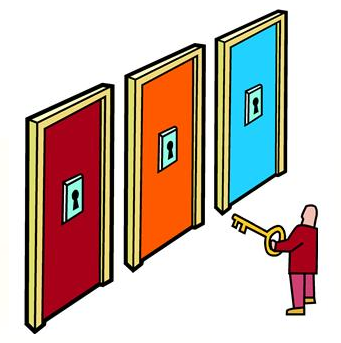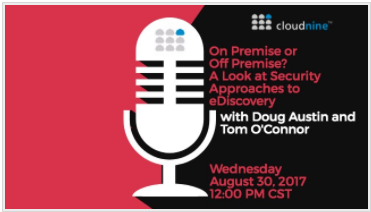Avoiding Glittering Generalities in Selecting eDiscovery Software: eDiscovery Best Practices
Editor’s Note: If you read our blog regularly, you know that we frequently reference my friend and CloudNine colleague Rob Robinson’s excellent blog, Complex Discovery for various industry information, including quarterly business confidence surveys, eDiscovery software and service market “mashups” and information about industry mergers and acquisitions (among other things). We’ve been discussing aspects of on-premise and off-premise eDiscovery offerings quite a bit lately (including this recent webcast conducted by Tom O’Connor and me a few weeks ago) and Rob has written a terrific article on the subject which he has graciously allowed me to publish here. This is the first part of his multi-part article – we will publish it in a series over the next couple of weeks or so. Enjoy! – Doug
Forget the glittering generalities of opinioned providers and professionals trying to champion a particular approach to eDiscovery at the exclusion of others. The reality is that on-premise and off-premise solutions delivered as part of both emerging and mature technology implementations are and will continue to be a fundamental piece of any eDiscovery software portfolio if an organization wants to address the areas of security, capability, complexity, and cost comprehensively.
Considerations for the Selection of eDiscovery Software
One of the ongoing topics in the area of eDiscovery software revolves around assertions and attestations on what is the optimal delivery model for achieving the best balance of security, capability, complexity, and cost in an eDiscovery software offering. On one end of the spectrum, there are champions of the on-premise approach whose argument centers around security and capability and highlights that ability to deal with complex data sets is more important than how long the software has been on the market. On the other end of the spectrum, there are champions of the off-premise approach, also known as the cloud-enabled approach, whose argument centers around the speed and cost benefits of self-service discovery supported by the economics of a public cloud infrastructure. Between the ends of this spectrum reside a variety of offerings that combine attributes of both on-premise and off-premise offerings to deliver unique solutions.
So, how does one go about determining what might be the best offering to help them solve their on-going eDiscovery challenges? That is a great question and one without a single definitive answer. However, the following considerations may be helpful to eDiscovery professionals as they examine on-premise, off-premise, and combination software approaches with the goal of determining what the best-balanced solution might be for their needs.
Four Areas of Evaluation
Regardless of the type of delivery approach selected for the conduct of eDiscovery, there at least four attributes that should be considered in every solution selection. These attributes are:
- Security: Does the solution provide the level of data protection needed for your eDiscovery effort?
- Capability: Does the solution allow you to complete the basic tasks required for your eDiscovery effort?
- Complexity: Does the solution allow you to complete advanced tasks required for your eDiscovery effort?
- Cost: Does the solution address security, capability, and complexity in a cost-effective manner?
The ability to approach these attributes individually and collectively to find a solution that meets requirements, preferences, and budgets, ultimately determines whether an organization is successful from a legal, technological, and business perspective in the accomplishment of eDiscovery. Next week, we will begin to touch on each of these areas of evaluation, beginning with a consideration of security.
So, what do you think? What factors do you consider when evaluating and selecting eDiscovery software? Please share any comments you might have or if you’d like to know more about a particular topic.
Also, I’m excited to report that eDiscovery Daily has been nominated to participate in The Expert Institute’s Best Legal Blog Contest in the Legal Tech category! Thanks to whoever nominated us! If you enjoy our blog, you can vote for it and help it win a spot in their Best Legal Blogs Hall of Fame. You can cast a vote for the blog here. Thanks!

Disclaimer: The views represented herein are exclusively the views of the author, and do not necessarily represent the views held by CloudNine. eDiscovery Daily is made available by CloudNine solely for educational purposes to provide general information about general eDiscovery principles and not to provide specific legal advice applicable to any particular circumstance. eDiscovery Daily should not be used as a substitute for competent legal advice from a lawyer you have retained and who has agreed to represent you.










